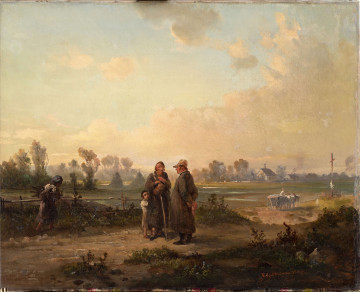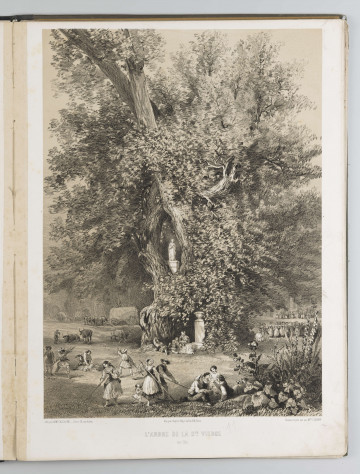
Orca
1911
National Museum in Lublin
Part of the collection: Genre scenes
Aleksander Kotsis is considered a forerunner of realism in the Krakow artistic circles of the second half of the 19th century. The most important part of his works are representations of peasant life, although he also painted landscapes (views of the Tatra Mountains), portraits and historical-symbolic scenes from the January Uprising. He came from a peasant family from Spisz, settled near Kraków. Since childhood, he showed artistic skills, but he was trained to become a merchant. With the help of an academy professor W. K. Stattler, he took up artistic education. During his studies, he made friends with A. Grottger, and, among others, J. Matejko.
Kotsis lived only 41 years, as he suffered from an incurable brain disease, which prevented him from working in his last years. Despite the difficulties, he left a substantial artistic output, almost half a thousand paintings, most devoted to rural themes. There is no idyllic vision in them, as was often the case with the peasant-oriented artists of the Young Poland movement. The small canvases show the truth about the existence of peasants in the poor villages of Galicia. The painter tackled complex problems to show poverty, exploitation and injustice, illness and death with great sensitivity. Viewers were disgusted by the ugliness of the subject matter, the critical pronunciation and the manner of execution, which is why most of the paintings never left the studio. To avoid criticism, he exhibited neutral, slightly idealised genre scenes, the protagonists of which are often children. He gave the figures of children and women a special significance in his art as if he were taking up those whose fate was not much cared for. He showed them in everyday situations, at work or play, always with heartfelt tenderness and compassion. An example of such an approach is the painting Zwózka siana [Hauling Hay]. It shows a large peasant family working in the field, with even the youngest children helping them. The way of painting presents the characteristic features of the artist's workshop – almost monochromatic colours limited to subtle browns broken with colourful accents and simplified, sketchy, as if unfinished modelling. It did not please the viewers of the time but gained recognition half a century later. In the 1930s, the Capists, ignoring the subject matter, delighted in the painterly qualities and innovativeness of Kotsis's technique, thus restoring his worthy place in Polish art.
Bożena Kasperowicz
Author / creator
Dimensions
cały obiekt: height: 31 cm, width: 25,5 cm
Object type
painting
Technique
oil technique
Material
canvas, oil-based paint
Creation time / dating
Creation / finding place
Owner
The National Museum in Lublin
Identification number
Location / status

1911
National Museum in Lublin

1857
National Museum in Lublin

1860
National Museum in Lublin
DISCOVER this TOPIC
Museum of King Jan III's Palace at Wilanów
DISCOVER this PATH
Educational path